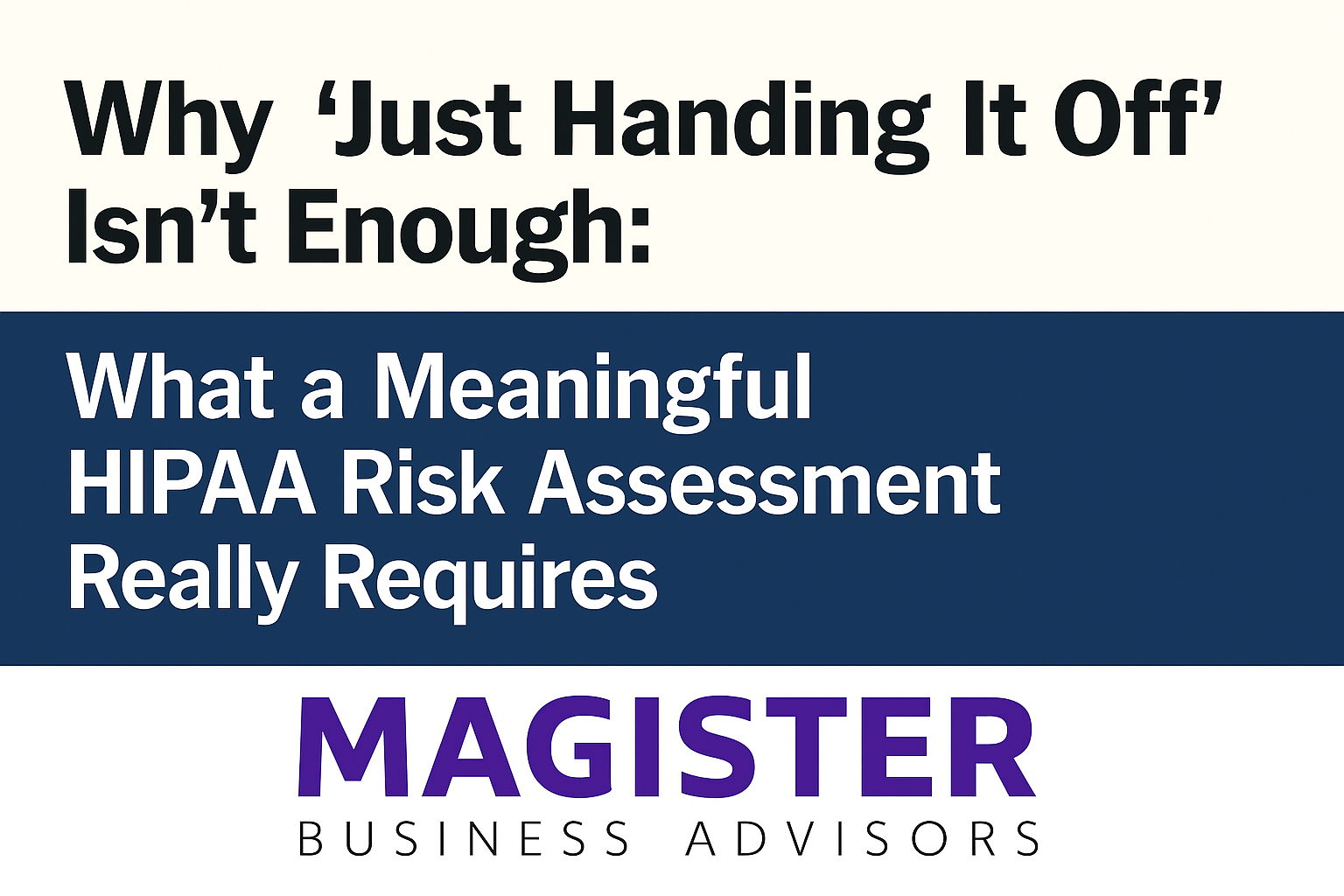Most healthcare providers didn’t enter the field to become cybersecurity or compliance experts — and they shouldn’t have to be. But HIPAA doesn’t exempt small or mid-sized practices from its requirements just because you’re busy caring for patients.
Here’s the uncomfortable truth: 94% of covered entities aren’t fully compliant with HIPAA, and one of the biggest gaps is the Risk Assessment. Not just doing one — but doing one meaningfully.
Too often, the risk assessment becomes something that’s handed off to “the IT guy,” outsourced with minimal oversight, or done through a checklist that’s treated as a compliance box to tick off. It feels like just another regulatory burden. And that’s understandable. If you’re a clinician running a small practice, you’re juggling patient care, payroll, HR, and operations — not building a cybersecurity program from scratch.
But ignoring it, or doing the bare minimum, doesn’t protect your organization — and it doesn’t meet HIPAA’s standards.
In fact, fines have been issued specifically for failing to conduct a meaningful Risk Assessment — not just for ignoring it entirely, but for doing it in a way that didn’t actually identify, prioritize, or mitigate real security risks. It’s that serious.
So What Is a “Meaningful” HIPAA Risk Assessment?
A meaningful HIPAA Risk Assessment is not just a document. It’s a process — one that engages leadership and results in concrete decisions. Here’s what it must include:
- Ownership and Accountability:
The owner, board, or management must be involved. They need to understand the risks, the mitigation plan, and what’s at stake. This can’t just be delegated with no follow-up or review. - Broad and Accurate Scope:
Every system that touches ePHI — from your EHR and billing system to email, mobile devices, and even paper records — has to be considered. That includes business associates. - Actual Risk Analysis:
It’s not enough to say “we use passwords.” The assessment must identify threats and vulnerabilities, evaluate how likely they are to occur, and what the impact would be if they did. - Clear, Tracked Mitigation Plans:
Each identified risk needs a documented plan: what will be done, who’s responsible, and how progress will be tracked. - Review of Policies and Training:
Your security policies need to be real, enforced, and aligned with how the practice actually operates. Staff training must be part of the assessment. - Follow-Up and Reassessment:
This isn’t a once-and-done event. Any time your technology changes — or you experience a breach or near miss — the risk assessment should be updated.
The Temptation to Minimize
Let’s be honest: for many smaller healthcare practices, HIPAA feels abstract until something goes wrong. There’s often an unconscious bias to “just let the tech person handle it” or rely on a templated document and hope it’s enough.
But HIPAA is clear: the responsibility rests with the organization — not the vendor, not IT, and not the EHR provider. And federal enforcement is increasingly focused on this. A weak or “check-the-box” risk assessment won’t cut it — and it could leave your practice exposed, both financially and reputationally.
Final Word
You don’t have to become a HIPAA expert. But you do have to make sure your practice is actively managing its risk — not just pretending to.
If you haven’t reviewed your risk assessment in the last year, if you don’t have a mitigation plan in place, or if your leadership hasn’t been involved in reviewing your risks — then it’s time to rethink your approach.
A meaningful HIPAA Risk Assessment isn’t just about compliance. It’s about protecting your patients, your data, and your business.
📞 Call us today: 760-759-5900
🌐 Contact us: www.magisterba.com


